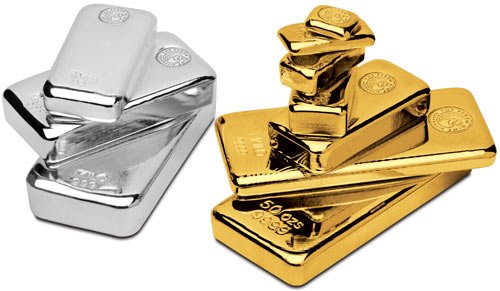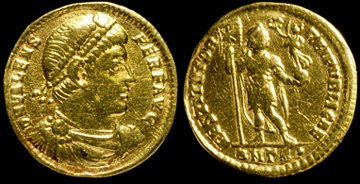I'd like to talk about precious metals investing today and the reasons for doing so.

For whatever reason, there seems to be more strongly opinionated views on gold than almost any other asset. Diehard gold bulls will tell you that owning anything else besides physical gold is utterly foolish while the gold bears will proclaim that it is pointless to own a hunk of metal that just sits there and produces no income. My view is somewhere in the middle of these two, and I will lay out the why.

Gold is the preferred form of money that mankind has chosen for thousands of years. Many other commodities have been used as money in the past such as tobacco, sugar, salt, cattle, nails, copper, cowrie shells and others. Along the way, gold and silver arose as the ideal form of money for most people because of the qualities those metals posses. So what does this mean for us today in 2017?

Well, everything changed for gold in 1971 due to a couple of major events. First, president Nixon took the US off the Bretton Woods agreement, which ended that version of the gold standard. Second, the Petrodollar agreement was created, which ensured that international markets would always use US dollars in oil trading. This deal was brokered with the house of Saud by then secretary of state Henry Kissinger.

The result of these events was that the US dollar would have no connection to gold, and the price of gold would now be set in the commodities futures markets instead of being a peg to a national currency as part of a gold standard. The gold price soared from $35/ounce in 1971 to over $850/ounce in 1980. Gold basically entered a bear market for the next twenty years, and didn't have another good decade until the 2000's.

Reasons To Own
I think it's very important to understand the purpose of precious metals investing and what to expect from investing in it. The main purpose of holding gold is for wealth protection and NOT wealth building. This means that the gold portion of your portfolio simply acts as insurance on the rest of the portfolio. Gold performs as an insurance policy against severe inflation and economic catastrophe. It's the kind of insurance that you hope you never have to use, because if gold is hitting all time highs in a short amount of time then this means the economic conditions at that time would be horrid.

If you hear someone say something along the lines of "Buying gold is the best way to get rich" or "the only way to build serious wealth is to invest in gold", then run away. It's true that gold CAN build wealth if you buy and sell at the right times, AKA timing the market. If one had bought gold in 1971 and sold at the peak in 1980 then they would have done very well, but the number of people who timed it that perfectly is very small. Most people will never be able to time the market perfectly, so planning your financial future on a single trade is certainly not a smart idea!
The way to build wealth through gold is by speculating in gold mining stocks. Gold stocks are leveraged to the gold price, so whenever gold rallies big, the stocks that explore for and produce gold will rally even bigger. These kinds of stocks are extremely volatile though, and should only be considered speculation with money you can afford to lose. I'll discuss mining stocks more in the future.
Conclusion
I see many people in the gold and silver community proclaiming that anything other than physical bullion is a fool's bet, and that they don't trust anything else. To me, this is silly. I'm not against gold at all, but if you don't put any money into interest-bearing accounts, then there is no way you can actually build wealth. Compound interest is the most powerful force in all of finance, and anyone who isn't tapping into it is only making things harder for themselves. Keeping around 10% of one's portfolio in precious metals is a prudent move. You can obviously go higher than that, but just don't ignore assets that pay an income such as stocks, whole life insurance policies, and rental real estate for example. Remember that physical gold is for protecting your wealth, not for building it.
*This post is not intended to be financial advice in any way. It is for informational purposes only.
Sources:
http://thefinancialphysician.com/2013/06/not-prepared-17-signs-that-most-americans-will-be-wiped-out-by-the-coming-economic-collapse/
https://foursignposts.com/2014/09/10/the-petrodollars-creator-iran-greater-threat-than-isis/
http://www.ancientresource.com/lots/ancient-coins/gold-coins.html
https://plus.google.com/+MacSaxe
http://www.anax-capital.com/invest-in-precious-metals/
https://goldsilver.com/blog/gold-and-silver-1970-s-vs-now/
This is good. I think you could have went deeper though. It is not that gold is going up in value rather...the value of the currencies are declining relative to the gold and silver (and now Bitcoin). In 1919 the exchange rate between the Mark and gold was 147 marks to 1 ounce of gold. In November of 1923 that same ounce of gold was worth 87 trillion marks. The inflation (hyper) was so bad that 1 ounce of gold could buy a person entire blocks of real estate in Germany during that time.
I think owning gold and silver is highly important. I do think that it is a generation of wealth. If you think about it...1 ounce of gold now is worth 1250 USD...but what happens if it goes up? That same ounce of gold could be worth 2000. What did any of us really do? Nothing...but that same ounce of gold has gained purchasing power (PP).
Good article. I will keep an eye out for more.
Well I mean that it's not a wealth builder only in the sense that it doesn't pay any interest/dividends, but you are right though, nothing competes with gold if there is hyperinflation.
I don't mean to say that precious metals are not important, because in case of severe economic catastrophe it could be an irreplaceable asset. Thanks for the comment!
Good info clearly presented.
@kus-knee (The Old Dog)
Well laid out argument. Here is a little more data to help with understanding the amount to hold. The chart is a Buy:Sell chart between the S&P500 (essentially the US stock market) and Gold. It shows what would have happened over 5 years if you had bought the stock market and sold gold.
The way to understand the chart - if the chart is rising the bought side is outperforming the sold side. It shows that in 2012 one would have been indifferent and from 2013 to mid-2015 it was better to be holding the stock market and since then indifferent again. Over those 5 years one did not want to be over-exposed to gold - so no more than 10% (as suggested) as insurance would have felt right.
Now let's look at a different 5 year period (2005 to 2010) to span the GFC.
This tells a very different story where you would have been a whole lot happier holding more insurance.
Now the big question is can you work this out in advance? Like everything in markets it takes a little while for new patterns to emerge. But if you do the Buy:Sell chart at this level (a whole market vs Gold) you will see when the chart turns over. At that point you would be safer choosing to increase or decrease the amount of insurance you hold. So looking at 2009, one would have safely reduced Gold holdings in May/June 2009 (market actually turned in March 2009). Looking at now, one may have increased Gold in February 2016 (and would have been wrong - as the strong stock market correction was based on words from the Federal Reserve and not on fundamentals)
Incidentally the charts for other precious metals look less noisy than Gold but they show the same thing [using SLV for Silver and PPLT for Platinum].
The next question is how does one hold Gold? Buying and storing Gold has challenges (people like to steal it if they know you have it). For US holdings, I buy shares in the exchange traded funds GLD or in the gold miners GDX and GDXJ (these are listed in the US). These funds all have solid options markets too - so one can buy options to cover an anticipated price direction (Calls to go up and Puts to go down). There are also ETF's listed in other markets (I have holdings in UK and in Switzerland). One can also buy ETF's that are hedged to a particular currency (I have gold ETF hedged in Swiss Francs - so my gold holding becomes neutral to currency moves in Swiss Francs terms)
How to build a buy:sell chart? I use http://stockcharts.com. Type the Buy:Sell tickers in the box separated by a colon like this: SPY:GLD - then adjust the detailed settings to the timeframe you want (only 5 years at a time for the free version)